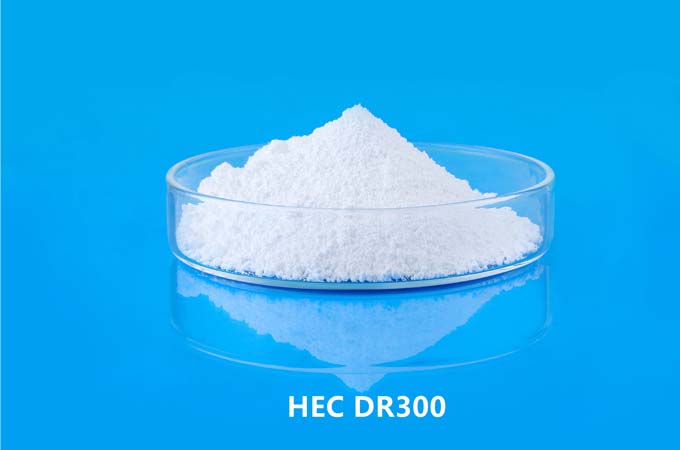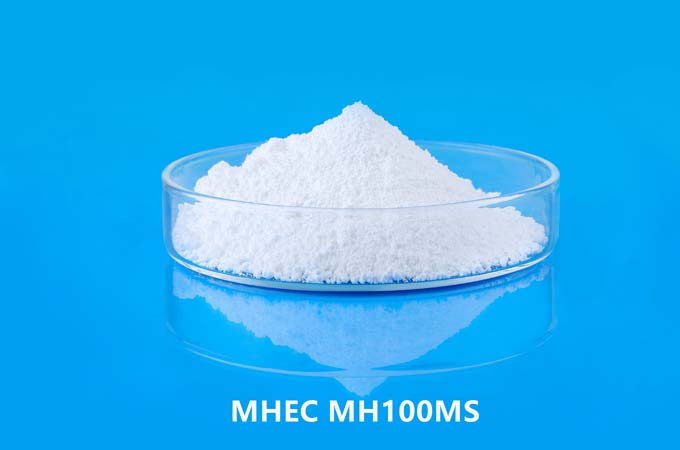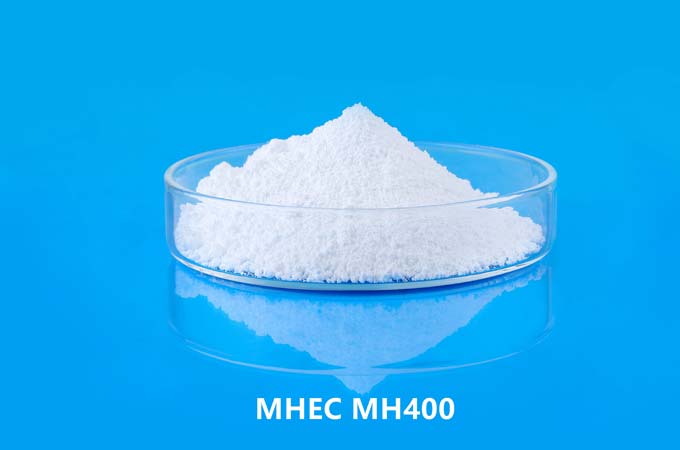Putty powder is mainly composed of film-forming substances (bonding materials), fillers, water-retaining agents, thickeners, defoamers, etc. Common organic chemical raw materials in putty powder mainly include: cellulose, pregelatinized starch, starch ether, polyvinyl alcohol, dispersible latex powder, etc. Below, Polycat will analyze the performance and usage of various chemical raw materials for you one by one.
Fiber
Fiber (US: Fiber; English: Fiber) refers to a substance composed of continuous or discontinuous filaments. Such as plant fiber, animal hair, silk fiber, synthetic fiber, etc.
Cellulose
Cellulose is a macromolecular polysaccharide composed of glucose and is the main structural component of plant cell walls. At room temperature, cellulose is neither soluble in water nor in common organic solvents. The cellulose content of cotton is close to 100%, making it the purest natural source of cellulose. In general wood, cellulose accounts for 40-50%, and there are 10-30% hemicellulose and 20-30% lignin.
The difference between cellulose (right) and starch (left):
Generally speaking, both starch and cellulose are macromolecular polysaccharides, and the molecular formula can be expressed as (C6H10O5)n. The molecular weight of cellulose is larger than that of starch, and cellulose can be decomposed to produce starch. Cellulose is D-glucose and β-1,4 glycoside Macromolecular polysaccharides composed of bonds, while starch is formed by α-1,4 glycosidic bonds. Cellulose is generally not branched, but starch is branched by 1,6 glycosidic bonds. Cellulose is poorly soluble in water, while starch is soluble in hot water. Cellulose is insensitive to amylase and does not turn blue when exposed to iodine.
Cellulose Ether
The English name of cellulose ether is cellulose ether, which is a polymer compound with ether structure made of cellulose. It is the product of the chemical reaction of cellulose (plant) with etherification agent. According to the chemical structure classification of the substituent after etherification, it can be divided into anionic, cationic and nonionic ethers. Depending on the etherification agent used, there are methyl cellulose, hydroxyethyl methyl cellulose, carboxymethyl cellulose, ethyl cellulose, benzyl cellulose, hydroxyethyl cellulose, hydroxypropyl methyl cellulose cellulose, cyanoethyl cellulose, benzyl cyanoethyl cellulose, carboxymethyl hydroxyethyl cellulose and phenyl cellulose, etc. In the construction industry, cellulose ether is also called cellulose, which is an irregular name, and it is called cellulose (or ether) correctly.
Thickening Mechanism of Cellulose Ether Thickener
Cellulose ether thickeners are non-ionic thickeners that thicken mainly by hydration and entanglement between molecules.
The polymer chain of cellulose ether is easy to form hydrogen bond with water in water, and the hydrogen bond makes it have high hydration and inter-molecular entanglement.
When the cellulose ether thickener is added to the latex paint, it absorbs a large amount of water, causing its own volume to expand greatly, reducing the free space for pigments, fillers and latex particles;
At the same time, the cellulose ether molecular chains are intertwined to form a three-dimensional network structure, and the pigments, fillers and latex particles are surrounded in the middle of the mesh and cannot flow freely.
Under these two effects, the viscosity of the system is improved! Achieved the thickening effect we needed!
Common cellulose (ether)
Generally speaking, cellulose in the market refers to hydroxypropyl, hydroxyethyl is mainly used for paint, latex paint, and hydroxypropyl methylcellulose is used for mortar, putty and other products. Carboxymethyl cellulose is used for ordinary putty powder for interior walls.
Carboxymethyl cellulose, also known as sodium carboxymethyl cellulose, referred to as (CMC):
Carboxymethylcellulose (CMC) is a non-toxic and tasteless white flocculent powder with stable performance and is easily soluble in water. Its aqueous solution is a neutral or alkaline transparent viscous liquid, soluble in other water-soluble glues and resins, and insoluble in organic solvents such as ethanol.
CMC can be used as binder, thickener, suspending agent, emulsifier, dispersant, stabilizer, sizing agent, etc. Carboxymethyl cellulose (CMC) is the product with the largest output, the widest range of uses, and the most convenient use among cellulose ethers, commonly known as "industrial monosodium glutamate". Carboxymethyl cellulose has the functions of binding, thickening, strengthening, emulsifying, water retention and suspension.
Application of sodium carboxymethyl cellulose in the food industry: sodium carboxymethyl cellulose is not only a good emulsification stabilizer and thickener in food applications, but also has excellent freezing and melting stability, and can improve product stability. Flavor, prolong storage time.
The use of sodium carboxymethyl cellulose in the pharmaceutical industry: it can be used as an emulsion stabilizer for injections, a binder and a film-forming agent for tablets in the pharmaceutical industry.
CMC can be used as an anti-sedimentation agent, emulsifier, dispersant, leveling agent, and adhesive for coatings. It can make the solid content of the coating evenly distributed in the solvent, so that the coating does not delaminate for a long time. It is also widely used in paints. .
Sodium carboxymethyl cellulose can be used as flocculant, chelating agent, emulsifier, thickener, water retaining agent, sizing agent, film-forming material, etc. It is also widely used in electronics, pesticides, leather, plastics, printing, ceramics, daily use Chemical industry and other fields, and because of its excellent performance and wide range of uses, it is constantly developing new application fields, and the market prospect is extremely broad.
Applications
exterior wall putty powder recipe interior wall putty powder recipe
Shuangfei Powder: 600-650kg 1 Shuangfei Powder: 1000kg
White cement: 400-350kg 2 Pregelatinized starch: 5-6kg
Pregelatinized starch: 5-6kg 3 CMC: 10-15kg or HPMC2.5-3kg
CMC: 10-15kg or HPMC2.5-3kg
The performance of putty powder after adding carboxymethyl cellulose CMC and pregelatinized starch:
It has good rapid thickening ability; bonding performance and certain water retention;
Improve the anti-sliding ability (sagging) of the material, improve the operating performance of the material, and make the operation smoother; prolong the open time of the material.
After drying, the surface is smooth, does not fall off powder, has good film-forming properties, and has no scratches.
More importantly, the dosage is small, and a very low dosage can achieve a high effect; at the same time, the production cost is reduced by about 10-20%.
In the construction industry, CMC is used in the production of concrete preforms, which can reduce water loss and act as a retarder. Even for large-scale construction, it can also improve the strength of concrete and facilitate the preforms to fall off from the membrane. Another main purpose is to scrape the wall white and putty powder, putty paste, which can save a lot of building materials and enhance the protective layer and brightness of the wall.
Hydroxyethyl methylcellulose (HEC)
Hydroxyethyl Cellulose Introduction
Hydroxyethyl cellulose (HEC) is a non-ionic cellulose ether made from natural polymer material cellulose through a series of chemical processes. It is an odorless, tasteless, non-toxic white powder or granule, which can be dissolved in cold water to form a transparent viscous solution, and the dissolution is not affected by the pH value. It has thickening, binding, dispersing, emulsifying, film-forming, suspending, adsorbing, surface active, moisture-retaining and salt-resistant properties.
Advantages of Hydroxyethyl Cellulose High Thickening Effect
Hydroxyethyl cellulose provides excellent coating properties for latex coatings, especially high PVA coatings. No flocculation occurs when the paint is a thick build.
Hydroxyethylcellulose has a higher thickening effect. It can reduce the dosage, improve the economy of the formula, and improve the scrub resistance of the coating.
Excellent rheological properties
The aqueous solution of hydroxyethyl cellulose is a non-Newtonian system, and the property of its solution is called thixotropy.
At rest, after complete dissolution of the product, the coating system remains optimally thickened and open.
In the state of pouring, the system maintains a medium viscosity, so that the product has excellent fluidity and will not splash.
The product spreads easily over the substrate when applied by brush and roller. It is convenient for construction. At the same time, it has good splash resistance.
Finally, when the coating is finished, the viscosity of the system recovers immediately, and the coating immediately produces sagging.
Dispersibility and Solubility
Hydroxyethyl cellulose is treated with delayed dissolution, which can effectively prevent agglomeration in the case of dry powder addition. After ensuring that the HEC powder is well dispersed, start hydration.
Hydroxyethyl cellulose with proper surface treatment can well adjust the dissolution rate and viscosity increase rate of the product.
storage stability
Hydroxyethyl cellulose has good anti-mildew properties and provides sufficient paint storage time. Effectively prevents pigments and fillers from settling.
How to use
Adding directly during production This method is the simplest and takes the shortest time. Proceed as follows:
Add purified water to a large bucket equipped with a high shear mixer.
Start to stir continuously at low speed and slowly sieve the hydroxyethyl cellulose into the solution evenly.
Continue to stir until all particles are soaked.
Then add antifungal agent, various additives. Such as pigments, dispersing aids, ammonia water, etc.
Stir until all the hydroxyethyl cellulose is completely dissolved (the viscosity of the solution increases significantly) before adding other components in the formula for reaction.
Prepare mother liquor for use: This method is to prepare mother liquor with higher concentration first, and then add it to the product. The advantage of this method is that it has greater flexibility and can be directly added to the finished product, but it must be properly stored.
The steps are similar to steps (1–4) in method (1): the difference is that there is no need for a high-shear agitator, and only some agitators with sufficient power to keep the hydroxyethyl cellulose uniformly dispersed in the solution are sufficient. Continue to stir continuously until completely dissolved into a viscous solution. It should be noted that the antifungal agent must be added to the mother liquor as soon as possible.
 English
English 日本語
日本語 français
français Deutsch
Deutsch Español
Español italiano
italiano русский
русский português
português العربية
العربية Türkçe
Türkçe Nederland
Nederland



